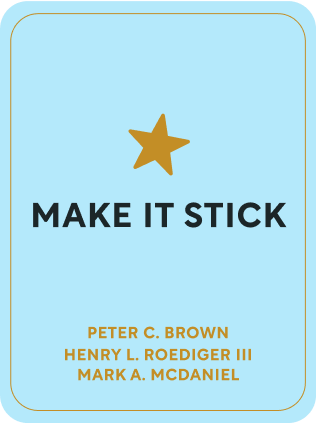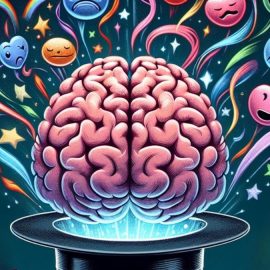

This article is an excerpt from the Shortform book guide to "Make It Stick" by Peter C. Brown, Henry L. Roediger III, Mark A. McDaniel. Shortform has the world's best summaries and analyses of books you should be reading.
Like this article? Sign up for a free trial here .
Can you increase your intelligence? Or is IQ fixed at birth? Is human IQ genetically predetermined or can it be improved?
Contrary to what many people think, your IQ isn’t predetermined. In fact, Americans’ average IQ has risen over time, likely because of changes in nutrition, schools, and culture.
Learn about the factors that affect your IQ and some strategies for improving your intelligence.
There Is More to IQ Than Your Genes
Several factors affect IQ scores, including:
- Genes
- Environment: A small genetic advantage can be multiplied in an environment that supports learning. For example, if two students are comparably intelligent but one is part of a family that has a home library and goes to a school that offers many types of classes and clubs, her learning will be nurtured and her intelligence will expand exponentially.
- Socioeconomic status: In more affluent families, the parents tend to have higher levels of education as well as jobs that give them more resources to support their children’s learning.
- Nutrition: Certain vitamins and nutrients support the brain’s health and boost its capacity for learning. Specifically, fatty acids aid nerve cell development and the formation of new synapses. Studies showed babies’ IQ scores were 3.5 to 6.5 points higher if they were exposed to fatty acid supplements directly or through their pregnant or breastfeeding mothers.
Given that non-genetic factors are implicated in IQ, you can increase your intelligence with lifestyle, practice, mindset, and the right tools.
Strategy #1: Growth Mindset
Grit and perseverance are far more important ingredients for success than intelligence. People who have a “growth mindset” are empowered to take their success into their own hands because they understand that effort and discipline are critical to their learning potential. These people work harder, take more risks, and view failures as learning opportunities.
On the other hand, people who have a “fixed mindset” have no sense of control over their own destinies because they believe that intelligence is the bottom-line determiner of success: They were either born with it or they weren’t. These people become helpless when they encounter failure because they attribute it to their lack of intelligence and ability.
Psychologist Carol Dweck studied this phenomenon and found several other characteristics associated with growth and fixed mindsets.
People with growth mindsets:
- Create learning goals, which focus on gaining information and skills. They set increasingly challenging goals in order to continually expand their knowledge.
- Tend to receive praise for their effort, which encourages them to continue to work hard and persevere.
People with fixed mindsets:
- Create performance goals, which focus on measurable achievements that validate their skills. They set more conservative goals to ensure they can achieve them and receive the validation they seek.
- Tend to receive praise for their intelligence, which discourages them from taking risks, for fear of blowing their image as an intelligent person.
(Shortform note: Read more about the growth mindset in our summary of Mindset, and about the value and the building blocks of grit in our summary of Grit.)
Strategy #2: Deliberate Practice
Mastery requires thousands of hours of deliberate practice. Deliberate practice is more than mere repetition—it has several distinct characteristics, including:
- Being solitary
- Being goal-oriented
- Pushing past current ability
(Shortform note: Read more about the power of deliberate practice in our summary of Peak.)
Pushing yourself, failing, troubleshooting, and trying again are necessary for building the skills and creating the mental models that lead to mastery. Through deliberate practice, you gradually develop a repertoire of increasingly high-level skills that you can then apply in a wide variety of situations.
Although deliberate practice is generally most effective when it’s solitary, coaches and trainers can play pivotal roles in helping you to see your areas of weakness, providing corrective feedback, and pushing you to redouble your efforts on the areas where you’re struggling most.
Strategy #3: Memory Cues
Memory cues are tools for shorthanding information that you need to remember. Memory cues can help you remember facts on a surface level, but they’re most valuable as a way of organizing and retaining information that you’ve already mastered. For example, you can use a mnemonic device to remember names and dates for a history test, but you won’t ace the test if you don’t understand the significance of those names and dates.
Mnemonic devices are tools that range from simple to complex to remember various types of information. For example, the acronym ROY G BIV is a mnemonic device for remembering the colors of the rainbow. In order for a mnemonic device to be useful, it needs to tether reminders to something very familiar, so that the things you need to remember are all tied to something nearly impossible to forget.
One type of mnemonic device that helps you recall larger amounts of information is a memory palace. Memory palaces capitalize on the idea that it’s easier to remember images than words.
To create a memory palace, follow these steps:
- Choose a physical space or route that you’re very familiar with, such as your home or your commute to work.
- Choose objects or features that stand out in that physical space, such as your couch or a major intersection.
- Make a mental link between each object and something you want to remember. For example, imagine yourself sitting on your couch with a friend who you need to remember to call.
When you need to recall the information, take a mental tour of the space. As you imagine yourself passing by each object, its associated reminder should pop up in your mind.
Another type of mnemonic device is a rhyme scheme, in which you create rhymes that associate your reminders with concrete images.
An example of a rhyme scheme is the peg method, which is a memory aid for lists of items. The peg method assigns an image to each number, from 1 to 20; the images always remain the same, no matter what you need to remember. Then you associate a reminder with each image. Say you assign “shoe” to 2, and you associate shoe with a reminder to go for a run.
Now that you understand the principles of effective learning, let’s look at how to apply them in practice.
Suggestions For Learners
Think of your intelligence as a work in progress and remember that you’re constantly learning.
Take an active approach to your learning. Reading this summary is a good first step. Follow up with these strategies:
- Pause regularly to ask yourself questions about the material you’re learning. These questions may include:
- What are the main concepts?
- How would I explain these to someone else?
- What concepts and information am I encountering for the first time?
- What connections can I draw to my existing knowledge?
- Think of a metaphor or image that demonstrates the principle you’re learning (for example, thinking of how the movement of a bowling ball illustrates a law of physics).
- Engage with your reading by anticipating what the main concepts will be and trying to define them before you’ve found the definition in the text. As you read, see if you were right.
- Similarly, try to solve math and science problems before you learn the formula. Once you learn the formula, go back and see how close you were.
- As you study, create questions to quiz yourself later.
- Schedule time to regularly spend a few minutes quizzing yourself on new and past material, interleaving multiple subjects. Check your answers and review the topics of the questions you get wrong.
To get the most out of a conference or professional development training, use these strategies:
- Using a copy of the schedule or presentation materials, test yourself about the main concepts.
- Schedule monthly emails to yourself with questions about the material to continue regular self-testing.
Suggestions for Teachers
Teachers play an important role in teaching their students how to learn and designing instruction that incorporates effective learning and studying strategies.
First, help your students understand the principles of effective learning, including:
- Desirable difficulties are important for deep understanding and long-term retention
- The only way to achieve mastery is to consistently reach beyond your current ability level
- Failures are not only inevitable but also provide invaluable learning opportunities
Second, incorporate desirable difficulties in your teaching by:
- Using the principles of spacing, interleaving, and variation in the way you present information
- Giving frequent, low-stakes quizzes and being transparent about the quiz schedule. Students generally react and perform better when they know when to expect quizzes, and the anticipation doesn’t reduce the quizzes’ effectiveness.
- Incorporating past lessons and material in quizzes and exercises
- Providing study aids that use retrieval practice, elaboration, and generation—such as practice tests, reflection writing exercises, short answer retrieval exercises, and problems assigned before a lesson is reviewed in class
- Explaining the methods to students, and acknowledging the initial frustrations that these can cause to prevent students from getting discouraged and distrusting the strategies
Additionally, consider using some of these strategies to integrate the principles of effective learning:
- Bloom’s Taxonomy Answer Keys: For each test, create an answer key that includes multiple answers for every question—an answer for each level of Bloom’s taxonomy of learning. Bloom’s taxonomy describes the different levels of comprehension: remembering, understanding, applying, analyzing, evaluating, creating (creating may not be relevant for many test questions). When students get their tests back, provide the answer key and ask them to consider at what level they answered each question and how they can reach a higher level. For example, did they merely recall the three branches of government (remember)? Did they explain how the branches interact through checks and balances (understand)? Did they illustrate how the three branches work to pass a piece of legislation (apply)?
- Free Recall: At the end of class, students spend 10 minutes writing everything they remember from the day’s lessons. Even if they feel stuck after just a couple minutes, they must spend the entire 10 minutes trying to recall anything they can. After 10 minutes, they revisit their notes from the day, check that what they’ve recalled is correct, and—most importantly—see what they’ve forgotten. Then they know they must study the information they forgot.
- High-Structure Class Design: Create a high-structure class, which includes daily and weekly retrieval exercises that are low-stakes but still count toward students’ grades.
- Learning Paragraphs: At the end of the week, students write a paragraph answering a question that reflects on something from that week—it may be about a main concept from the material, or how the student would improve her performance on the next test.
- Role Playing: For practice skills, have students role play, which allows them to use generative learning, get feedback, and reflect on how they could improve their approach.
- Small Groups: Students work in small groups during class to answer a high-level conceptual question the teacher poses. After a while, one student from each group explains her group’s answer to the rest of the class, and the class critiques the group’s conclusions.
- Summary Sheets: At the start of each week, students turn in a summary sheet of the previous week’s lessons, preferably through illustrations (if the subject allows) with notations pointing out key concepts.
- Testing Groups: Replace study groups with testing groups. Without referring to their textbooks, students gather in groups to discuss questions they’re struggling with and collaborate to find the answers. Each student typically knows different aspects of the answer, and together they can piece together the entire concept.

———End of Preview———
Like what you just read? Read the rest of the world's best book summary and analysis of Peter C. Brown, Henry L. Roediger III, Mark A. McDaniel's "Make It Stick" at Shortform .
Here's what you'll find in our full Make It Stick summary :
- How to understand and remember what you learn
- How a little forgetting helps you remember
- Why you’re not a good judge of how much you know






